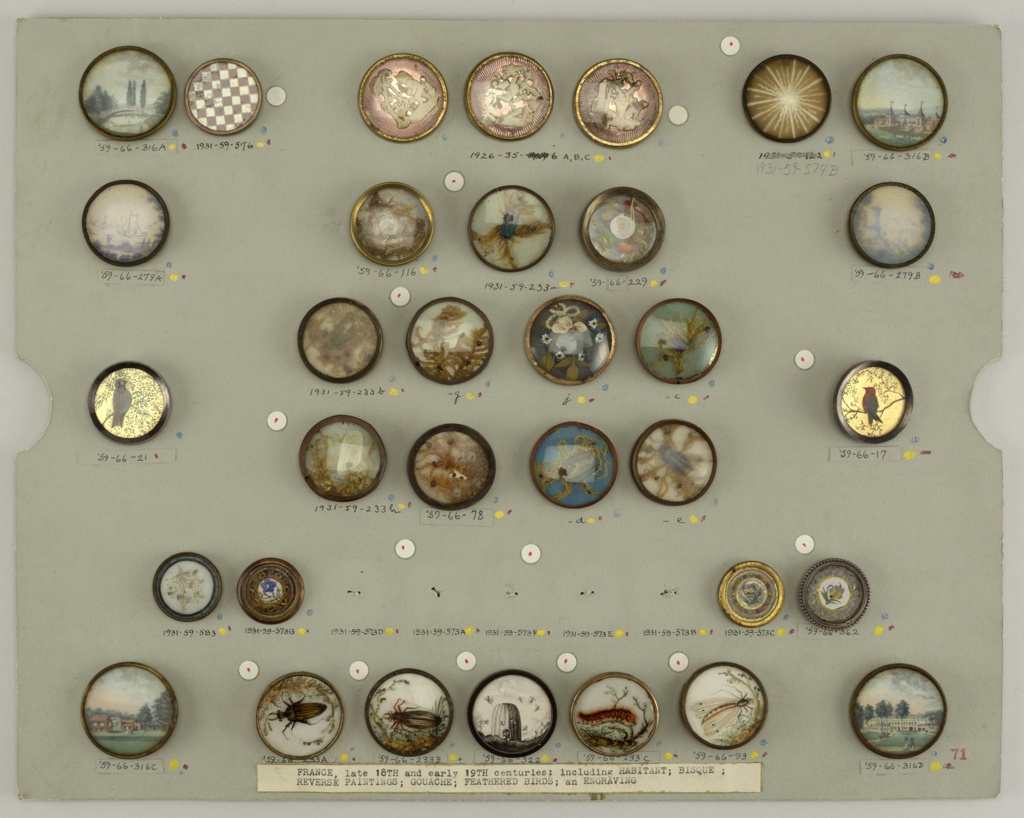There is one other image of this object. See our image rights statement.
Object Timeline
|
1959 |
|
|
2007 |
|
|
2015 |
|
|
2019 |
|
|
2025 |
|
Button (France)
This is a Button. We acquired it in 1959. Its medium is porcelain, brass, glass. It is a part of the Product Design and Decorative Arts department.
INSECTS (right case)
In 18th-century France, the use of the butterfly as a decorative motif converged with a growing general knowledge of entomology (study of insects) amongst the educated. Around 1750, Charles-Germain de Saint-Aubin (French, 1721–1786), royal embroiderer to King Louis XV, produced a series of ornament prints entitled Essai de papilloneries humaines (Ideas for Scenes with Butterflies Masquerading as Humans) that created a social context for anthropomorphized butterflies. Just a few years later, the French verb "papillonner" was used for the first time to describe the act of flitting from one thing to another. An extension of this is the papillon—a man drawn to every passing fancy. In this context, it is not surprising that the butterfly became a popular motif for waistcoats.
This object was
bequest of
Julia Hutchins Wolcott.
It is credited Bequest of Julia Hutchins Wolcott.
Cite this object as
Button (France); porcelain, brass, glass; Bequest of Julia Hutchins Wolcott; 1959-66-93
This object was previously on display as a part of the exhibition Embroidered and Embellished.
